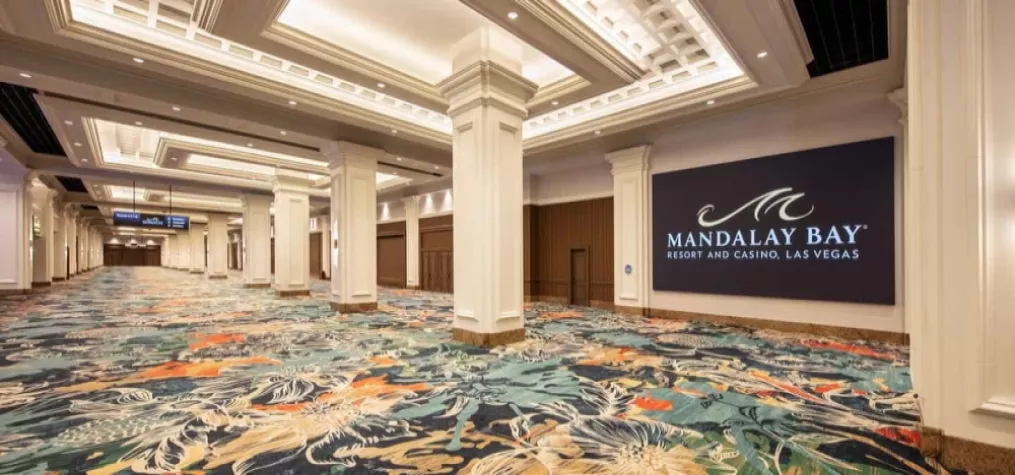In today’s global business landscape, it’s more important than ever to be able to communicate effectively with people from all over the world. When planning an event with a global audience – whether a small meeting, large conference or trade show – it’s important to consider how you will engage all your participants.
Multilingual translation and interpretation solutions have come a long way in recent years, making it possible for presenters and speakers to reach a greater audience than ever before. However, there are some challenges and considerations to be aware of when choosing the most effective interpretation solution for your needs.
Breaking Language Barriers
Global events bring people together to share information and build relationships.
Today, industry leaders no longer operate in a silo; to stay competitive and effective, they must be able to engage people from all over the world, not just in their own backyard. To build international relationships and reap the benefits of global collaboration, it is essential that your corporate events cater to a multilingual audience. Breaking language barriers at your important events can help you to:
Increase attendance and engagement: By breaking down language barriers, you can dramatically increase the number of people who can attend and participate in your event.
Foster inclusion: Translation and interpretation services bring all attendees into the conversation, including those who don’t speak English or who speak English as a second language.
Facilitate collaboration: To be sure, breaking language barriers is not a purely altruistic endeavor. With the help of interpretation and translation, your organization opens itself up to the insights and expertise of those who speak a different language. Collaboration, which cannot happen without effective communication, is a key driver of innovation.
Types of Translation Solutions
There are a few different types of event interpretation solutions, including simultaneous, consecutive and sight translation. Deciding between simultaneous and consecutive interpretation depends largely on the size of the audience you’re addressing.
Simultaneous interpretation, where interpreters translate speeches or presentations in real-time, is ideal for large conferences and seminars. Consecutive interpretation, where the speaker pauses periodically to allow the interpreter to translate, suits smaller-scale events or intimate settings where a more personal touch is desired. Sight translation, which provides written captioning, can also be useful when you need translation in more than one language.
To choose the right translation solution, organizers should carefully assess factors, such as audience size, language requirements, venue logistics and budget constraints.
Challenges of Multilingual Communication
Despite the benefits, multilingual communication in global events poses several challenges. Ensuring linguistic accuracy, maintaining cultural sensitivity and managing technical logistics require careful planning and coordination. Moreover, budget constraints and time limitations may influence the choice of translation solutions, necessitating a balance between quality and cost-effectiveness.
Best Practices for Incorporating Translation Solutions
Know your audience: This involves not only identifying the languages spoken by your attendees but also being aware of cultural nuances that may affect communication. Tailoring your translation and interpretation services to accommodate these needs enhances inclusivity and engagement.
Communication prior to the event: Encourage engagement and set expectations for the event in your communications leading up to it. This includes providing information about the available translation services and how to access them, such as downloading specific apps or accessing interpretation devices. Additionally, soliciting language preferences in advance can help in better planning and resource allocation.
Choose the right translation solutions: Choose the translation and interpretation solution that best suits your event and your audience. Large-scale events might benefit from simultaneous interpretation to maintain the flow of presentations, while smaller, interactive sessions might be better served by consecutive interpretation. Ensure that the interpreters or translation service providers are not only linguistically proficient but also familiar with the event’s subject matter. Expertise in specific industry terminology can significantly impact the quality of interpretation.
Looking ahead
In the past, language barriers held us back from communicating and collaborating with people in different cultures. Fortunately, a variety of modern tech solutions have made it possible to work together, share ideas and conduct business with colleagues virtually anywhere in the world. Engage stakeholders from around the world at your next event by understanding the needs of your audience and selecting translation solutions that allow for effective communication and active participation.
Don’t miss any event-related news: Sign up for our weekly e-newsletter HERE, listen to our latest podcast HERE and engage with us on LinkedIn!


